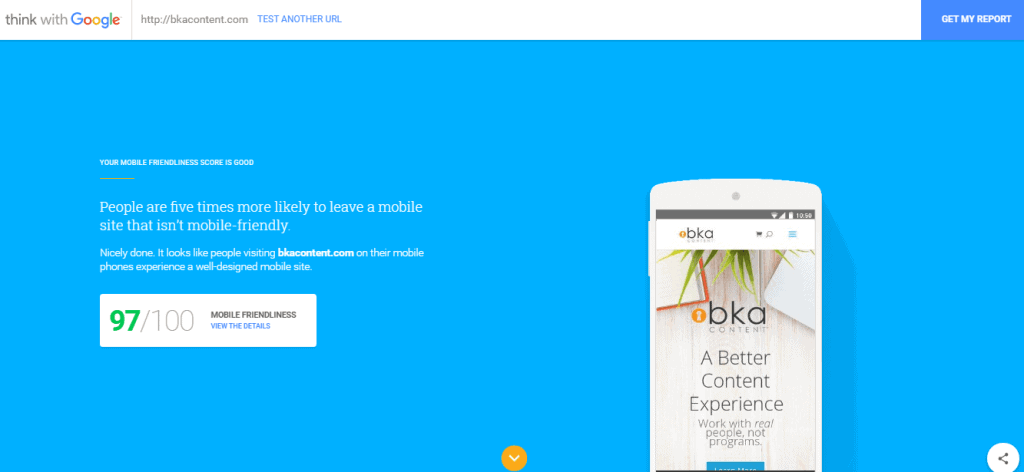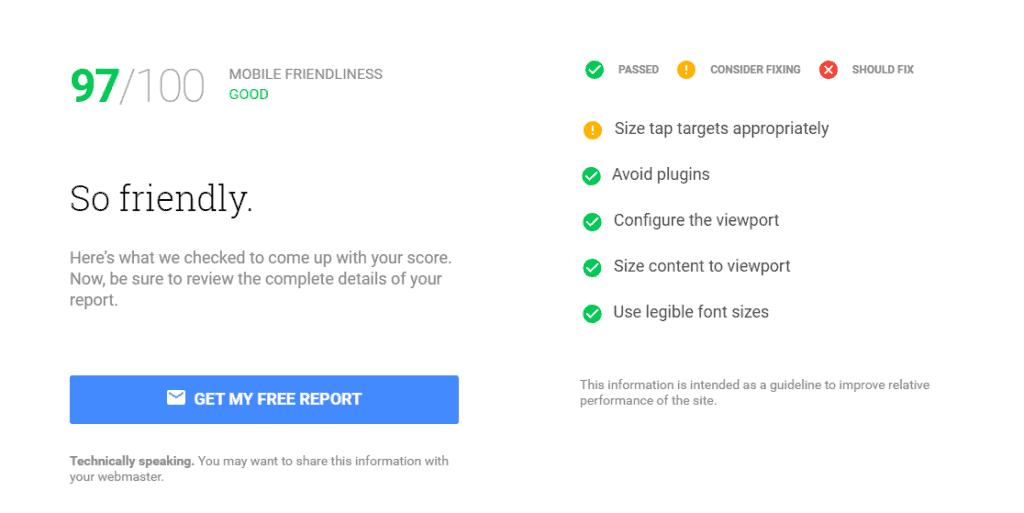
How and Why to Work on Improving Your Mobile-Friendly Website


There’s no question about it. We love our mobile phones and devices. We spend hours using them and touch them over 2,600 times a day. There’s even a word to describe our fear of losing them: Nomophobia.
This obsession with mobile devices is being reflected in how people research and visit websites. As of 2015, mobile Google searches have overtaken desktop Google searches worldwide, reported here by Search Engine Land. Just last year, Marketing Land reported statistics from comScore showing that mobile usage was on its way up, while desktop usage is seeing a decline.
This is big. Really big. It means that marketers, now more than ever, need to start changing their view of websites, truly prioritizing the mobile experience for users and investing in great SEO content writing for mobile formats, or risk being left behind as the mobile-friendliness of a site becomes increasingly important for search rankings.
Mobile-Friendliness is Mandatory
Mobile-friendly sites haven’t always been an expected standard, but they are now. Just last fall, Google released a blog on the increasing importance of mobile-friendly websites. In that article they state that eventually the content of mobile sites will be the primary way that sites are ranked.
What’s the significance of this for marketers? Sites that aren’t mobile-friendly may see a hit (if they haven’t already) to mobile search rankings.
Elements of Mobile-Friendliness
The basic things you should be asking yourself as you strive to make your site mobile-friendly are “What kind of experience am I creating for my users? Is the text easy to read? Are the images sized correctly? Is my site free of obtrusive popups and other elements that inhibit readers from engaging with my content?”
A popular tactic is to make your site responsive, meaning that it adjusts to the size of the screen it’s being viewed on. Though, as Neil Patel points out in this Search Engine Journal article, going with a responsive site isn’t the only option for mobile-friendly pages, it is a popular and effective one.
To help you along with achieving your mobile-friendliness goal, Google has a few tools and frameworks created for this purpose. Even if you won’t be the person who ultimately fixes any technical issues your site may have, it’s good to understand how to diagnose some issues and what common elements your site may be missing.
Google’s Mobile-Friendly Test

If you want to understand the exact issues with the mobile experience of your site, Google recommends taking their Mobile-Friendly Test, which simply requires you to enter the URL of your site then shows you scores for your mobile friendliness, mobile speed and desktop speed, along with details on what you need to fix to improve your scores. This is a great first step to understanding what needs to be changed to improve the mobile friendliness of your site.
Some of the common elements that may need to be optimized on your site include:
- The size of “tap targets” (various elements that users need to click on when interacting with your site)
- Interstitials and pop-ups that obscure the user experience.
- Content that can’t be played on a mobile device

Once you understand where your site falls short, you can work on fixing those issues. To allow yourself to focus more on these technical issues, you may want to hire a blog writing service to help you continue creating content that’s optimized for mobile.
The AMP Project
What is the AMP Project and how does it apply to a mobile-first mindset? Google created this streamlined HTML framework to help website owners and publishers improve the mobile experience of their sites. If you’ve searched for news recently, you’ve probably noticed that some of the articles are marked with the AMP (which stands for Accelerated Mobile Pages) lightning icon. When you click on them, they load abnormally fast compared to how things used to be.

Though the streamlined AMP pages are mobile-friendly and are a good thing to pursue for marketers looking to improve the mobile experience of their content, they aren’t actually a ranking signal. However, there’s a possibility that could change in the future, according to Search Engine Land.
Voice and Local Search
Let’s cover one more element of making your site mobile-friendly: the way people will be searching on mobile devices. It’s not uncommon for people to make voice searches on their phones because of the ease of use. According to a Google survey, two common reasons for using voice search on mobile devices are because it’s efficient and because it enables people to multitask.
This influences the SEO of your site because of the way people phrase voices searches. According to Search Engine Watch, voice searches are often structured as questions and they’re often longer than your average search.
Lastly, don’t underestimate the importance of optimizing for local searches. While more PC-users search for local results than do mobile phone users (96 and 79 percent, respectively), according to findings from Neustar Localeze, comScore and 15 Miles in this Search Engine Journal article; purchases were made after mobile local searches 80 percent of the time, compared to just over 60 percent for PC users. Consider both of these types of searches in your content marketing SEO approach.
In a nutshell, having a mobile-friendly site is about satisfying the needs of your users. People commonly access your website on mobile devices, and that trend isn’t likely to change. When users navigate to your site, they should be able to easily consume the content on your pages without interruption from disjointed loading times or annoying popups. Most importantly, you should be making it easy to take action on your site on a mobile device.
Ignoring the mobile experience is ultimately a bad business decision. It could drive away users, hurt your search rankings and undermine your influence on the web. Start taking steps today to achieve a more mobile-friendly and user-friendly website.
- The Google Quick Answer Box: What, Why and How? - December 20, 2023
- Top 10 Link-Building Strategies for Content Marketers - July 12, 2023
- 8 Types of Ecommerce Content You Should Start Using - May 15, 2023

